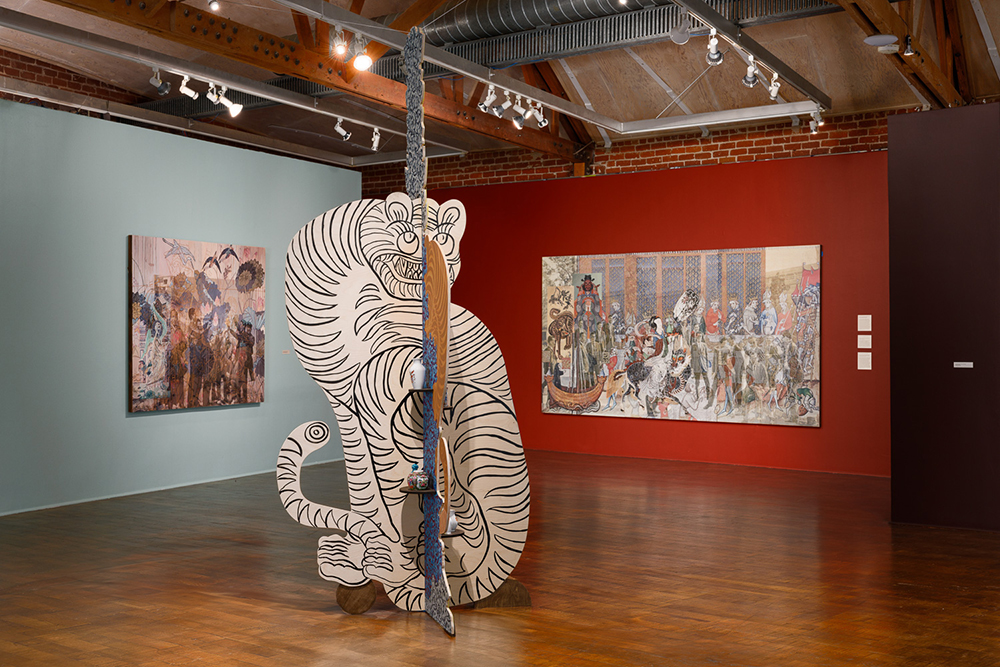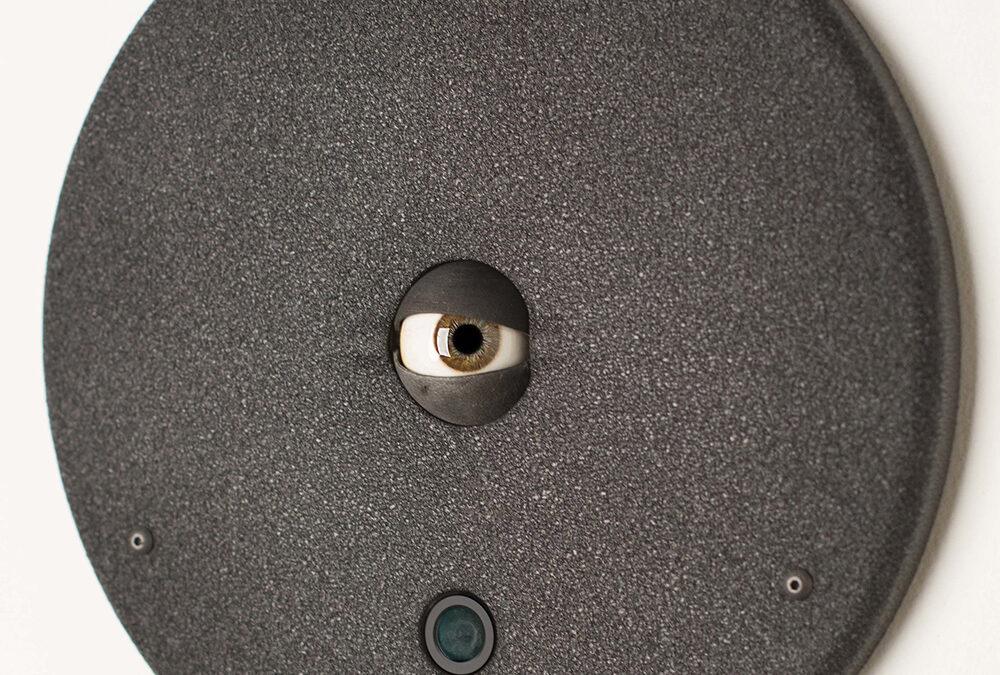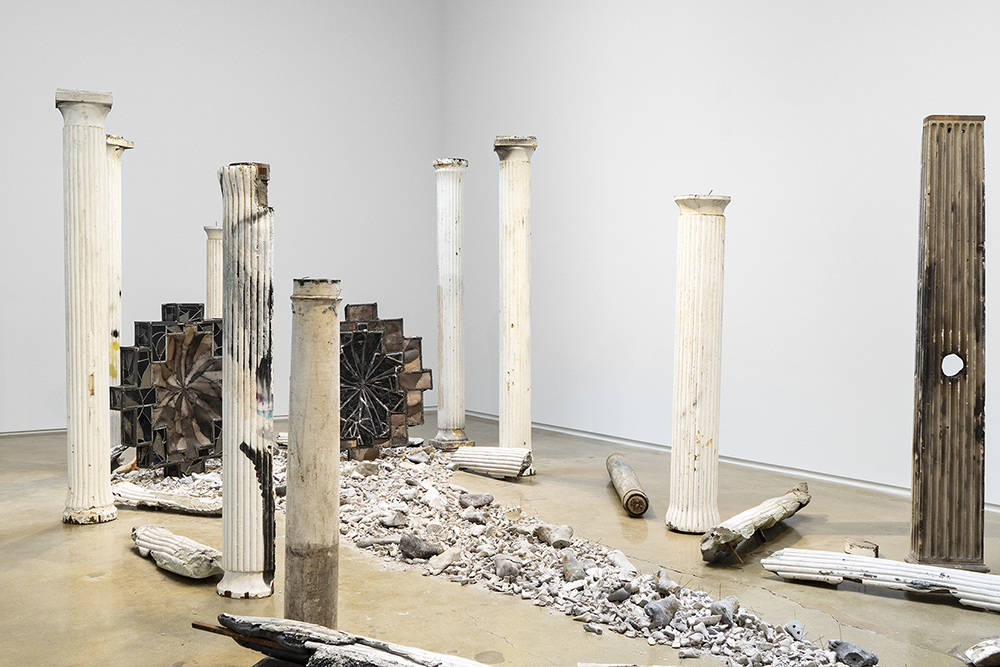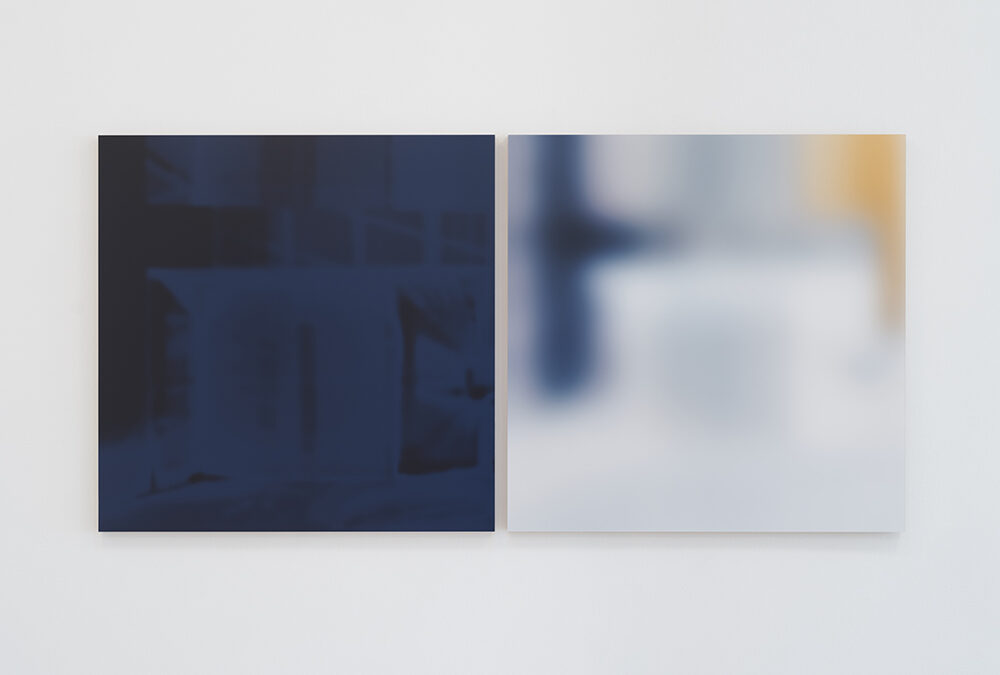In The Head in the Tiger’s Mouth (2021), the first composition in Kyungmi Shin’s kaleidoscopic exhibition, my eyes immediately landed on the luminous collection of swirls and stripes suggesting the calligraphic form of a tiger before catching on the colorful tableau...





